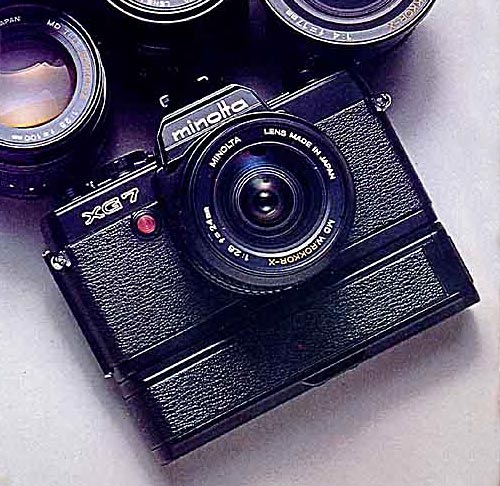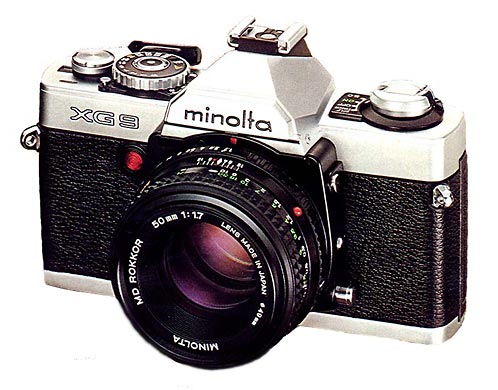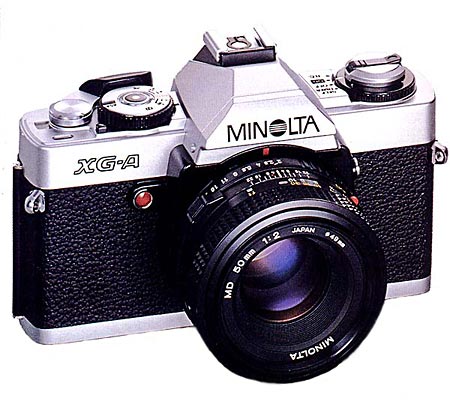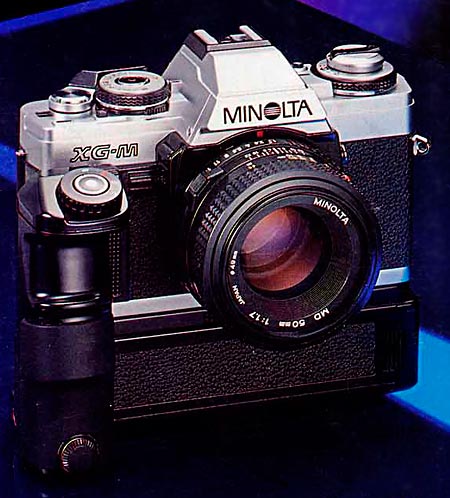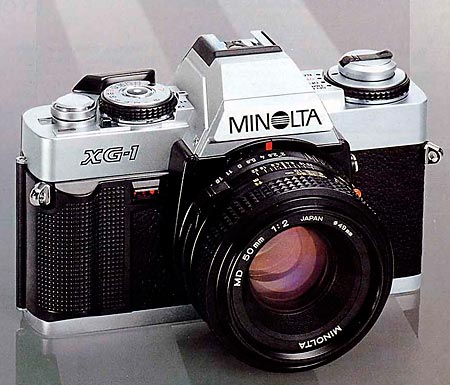
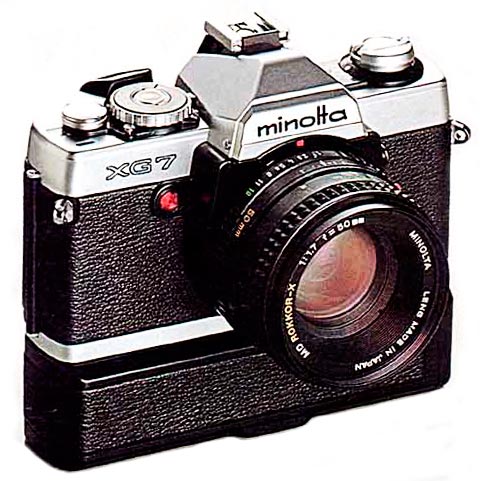
The Minolta XG Series of cameras commenced in 1977 with the launch of the XG7 which coincided with the release of the new XD Series body, the XD11 (XD in Japan, XD7 in Europe and Oceania). The new cameras were designed to provide automatic exposure photography to users at a lower cost than the XD bodies, and as a result they fell between the XD Series and the mechanical SR-T Series that was still in production.
The design of the new XG Series reflected the advances in electronics and miniaturisation being achieved at the time, and boasted a much smaller body than the XE and SR-T cameras that had preceded it. The XG Series proved to be a very successful range for Minolta, with its simplicity of use and compact size proving very popular in the marketplace. Additionally, like the XD Series the cameras would accept an auto winder (in this case the Minolta Auto Winder G) that provided motorised frame advance at up to two frames per second.
The XG Series cameras all used a centre-weighted CdS cell exposure meter as opposed to the new silicon cell meters introduced with the XD series. Accordingly, their effective range and responsiveness was not as great as the XD, but the metering range of EV2-17 at ISO 100 with f/1.4 lens was more than adequate for most users. They are equipped with a horizontal-traverse cloth focal plane shutter providing speeds of 1 second to 1/1000th second, with X-sync at 1/60 and a "Bulb" setting for long exposures.
The XG series cameras are basically designed to be used in aperture priority auto-exposure mode for ease of use. Accordingly, the exposure system is aperture priority auto-exposure with step-less shutter speeds, ±2 EV, with manual shutter speed settings available on most models. An over-range lock engages if a shutter speed higher than 1/1000th second is necessary, to prevent over-exposure.
While manual shutter speed settings are available on most XG Series cameras, the metering display is normally inactive if manual mode is engaged, making use of manual shutter speeds a more difficult process than that available with the XD Series. There are some exceptions to this rule, however most XG cameras are not really designed for manual use.
Other features of the XG Series include:
- An over-sized mirror which eliminates telephoto cut-off even with the longest lenses (other manufacturers often used smaller mirrors which had a blacked out portion at the top of the frame when telephoto leneses were used).
- PM type focusing screen, with a horizontal bi-prism surrounded by a micro-prism band for easier focusing.
- An electronic shutter release with touch-switch shutter button, which means that when the main switch is turned on the LED metering display is activated with a simple touch of your finger on the shutter release.
- A shutter release socket which accepted both electronic release or traditional cable releases.
- An electronic self-timer, which counts down ten seconds with the battery check light on the front of the body, plus an audible beep if so equipped.
- A hot flash shoe with the X terminal to automatically select the 1/60th second X-sync. when a dedicated flash is attached and charged, which will also activate a blinking flash-ready LED in the view-finder. A PC flash sync. terminal was also provided.
- A film safe-load signal on top above the frame counter.
Often over-looked by Minolta enthusiasts, particularly now as used prices are similar to more capable bodies, the range nevertheless offers capable cameras with as many features as the average photographer needs, and of course they take all Minolta manual focus lenses. Even the lowliest XG-A can produce stunning photographs, and probably would not inhibit most amateurs' shooting styles. In fact the ease of use of the XG Series cameras can make them an excellent camera for less experienced photographers, which goes a long way to explaining their popularity during their lifetime.
